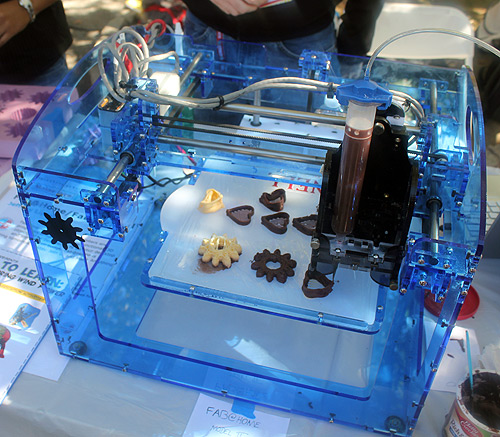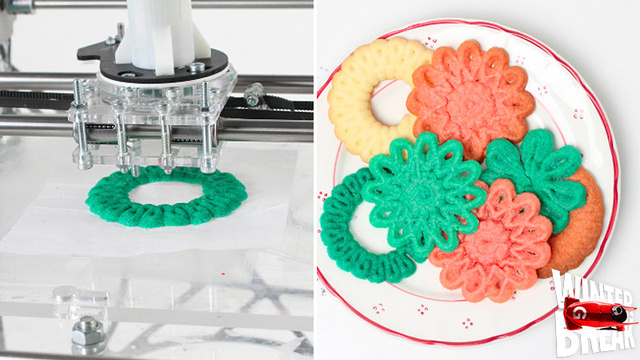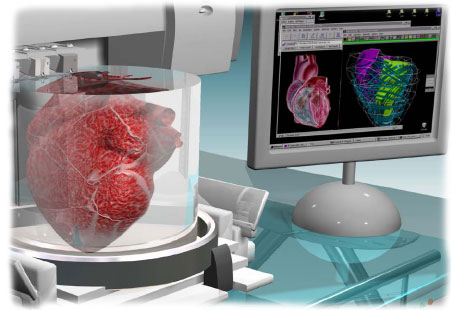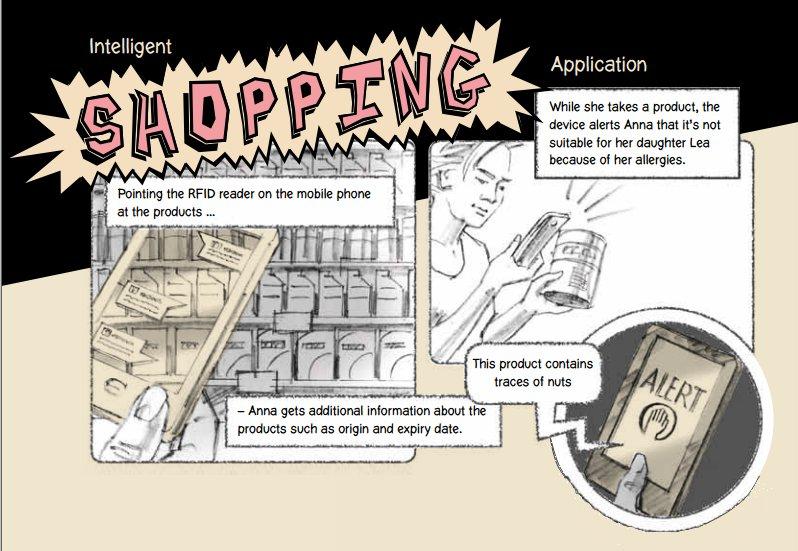
I’m finishing my edits to a manuscript that grew out of CFM’s Feeding the Spirit Symposium in Pittsburgh last year. The discussion guide we assembled for the subsequent webcast is morphing into an e-book as well as a traditional print publication. This gave me the chance to expand the content and deepen our exploration of the relationships among museums, food and community.
Editing the text made me aware of a glaring hole in my thinking about this topic. The symposium covered how museums can help improve food literacy; make values-based decisions about their own food services; and use food to reach out to new audiences. It did not, however, consider the future of food. I going to address this topic periodically on this blog—a format more suited than a book, in many ways, to sharing signals that hint at the future landscape of food but may prove to be ephemeral.
So, my first two potential game-changing trends for the world of food are:
3-D Printing, which is a kind of additive manufacturing in which you build your final product out of bits of material glued or fused together, rather than by injecting stuff into a mold or carving bits away. There is no reason that the “bits” can’t be edible, resulting in a final printed product such as chocolate
Or even meat. Assembling artificial meat from its component amino acids is a particularly exciting prospect for some animal rights activists, as well as those concerned about the high carbon foot- (or hoof-) print and relative inefficiency of raising actual animals. The “meat printer” is still in early stages of development, and I couldn’t find a good picture. Though medical researchers have tested printing working organs, which is kind of the same thing. Sort of. Ick.
Some implications:
- If we invent what is, in effect, a Star Trek-type food replicator, will that replace microwave meals (no great loss) or make further inroads on the culture and camaraderie of cooking?
- If we can build a dish molecule by molecule, would that enable people with health issues related to diet, or who have food allergies, to enjoy food with the look, feel and taste of traditional dishes while leaving out elements that put those foods off-limits?
- Will the ability to “play with our food” using high-tech gadgets bring together the hacker and the food communities, spawning maker labs devoted to food experimentation?
The Internet of Things. It is increasingly common for everyday objects to be connected to the internet, and many are equipped with near-field communication devices and/or sensors that collect some sort of information about their environment. Program these objects to share information with each other, and take appropriate action in response to incoming data, and you have the Internet of Things: a world in which your trash can detects that you have discarded a carton of milk and orders a new half gallon (2%, lactose-free) to be added to your automated delivery. Or (one step spookier) your bathroom scale, bio-monitor wristband and refrigerator compare notes, notice you have put on a couple of pounds and your blood pressure has crept up, select an appropriately healthy menu for the following week, order all the ingredients, and download the recipes to your iPad.
A somewhat less creepy and more immediately practical function is envisioned in the marvelous Internet of Things comic book, which illustrates how the IoT can help make shopping less fraught for people managing food allergies and intolerances.
Some implications:
- If the things that surround us do our food thinking and planning for us, will we pay less attention to what we eat and put less thought into expanding our food boundaries?
- When food can tell us where it comes from, and how it was raised, shipped and prepared, it will be easier for us to make informed choices about the food we purchase. Locavores, people seeking to minimize their carbon footprints, people dedicated to organic farming, people who believe in humane slaughter—they could each program their food-assistive devices (refrigerator, shopping cart, etc.) to help them screen their choices and ensure they are in line with their values. Will this result in a more sustainable food system? Will it further fragment the social aspect of dining, as people become more narrow and entrenched regarding what they will and will not eat?
- In the museum of the future, will a visitor enter the café only to be greeted with a personalize menu that reads: “We noticed you spend a lot of time in the French Impressionist Galleries today, and it is rather cold and nasty out. May we suggest a nice warming bowl of cassoulet?”
Please share your vision of the future of food, and its implications for society, in the comments section, below, or by tweeting to the attention of @futureofmuseums. Until next time—ciao.













I'm very happy to discover this great site the future of this discussion is getting good and more useful for me. Thanks for sharing.
regards
Los Angeles Corporate Vending Machine